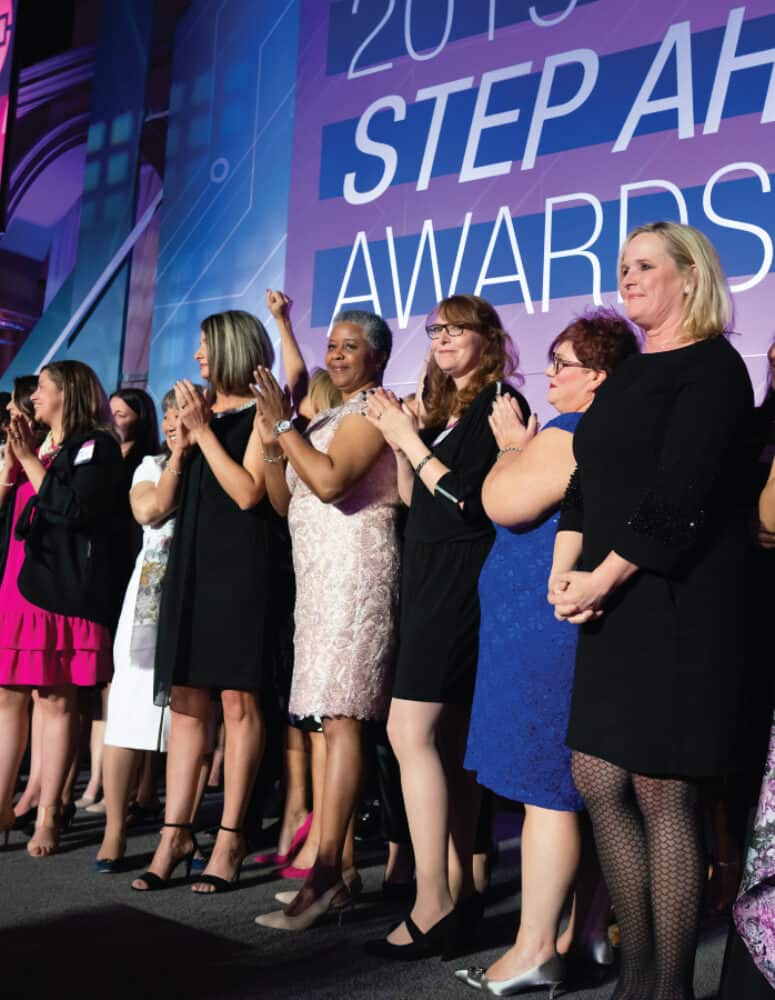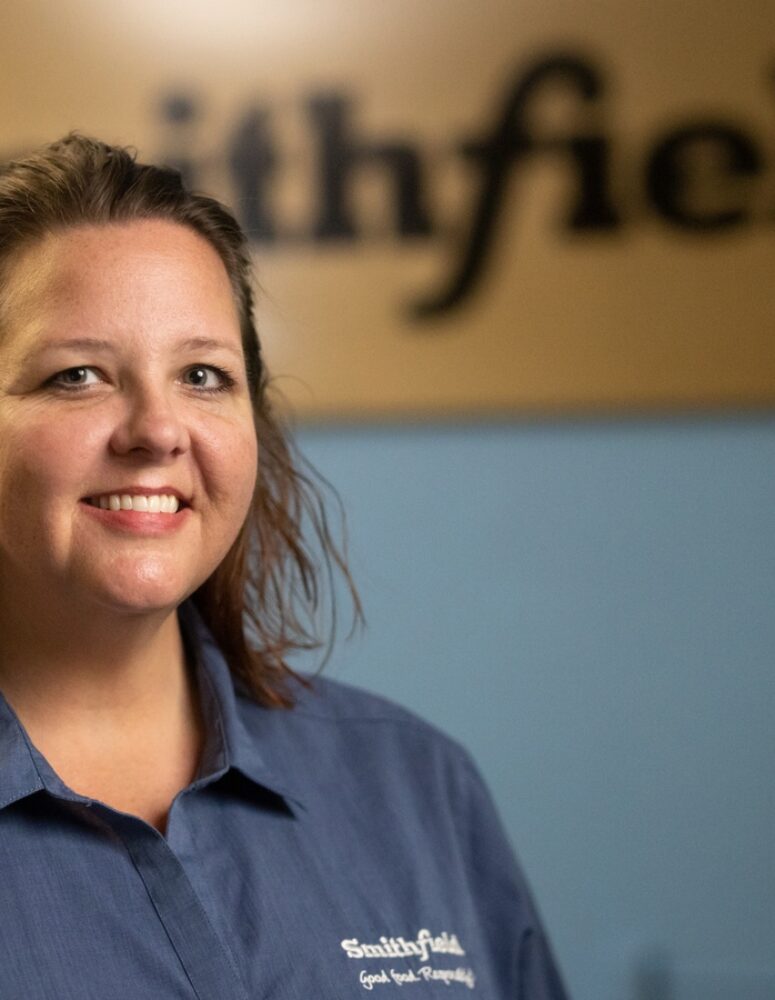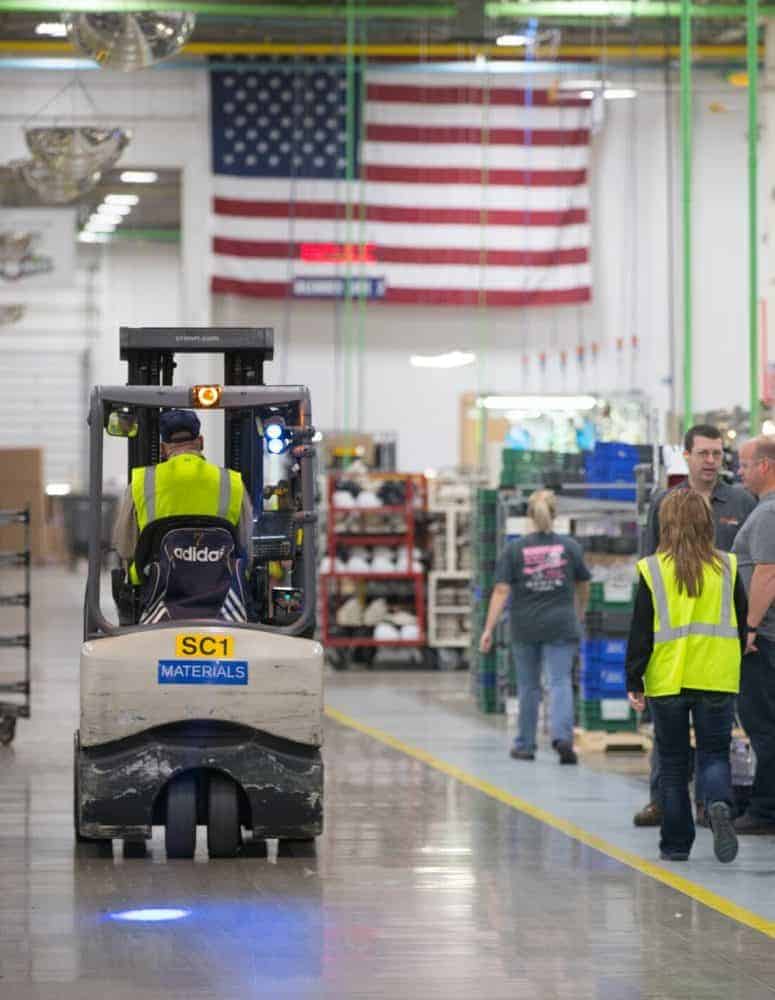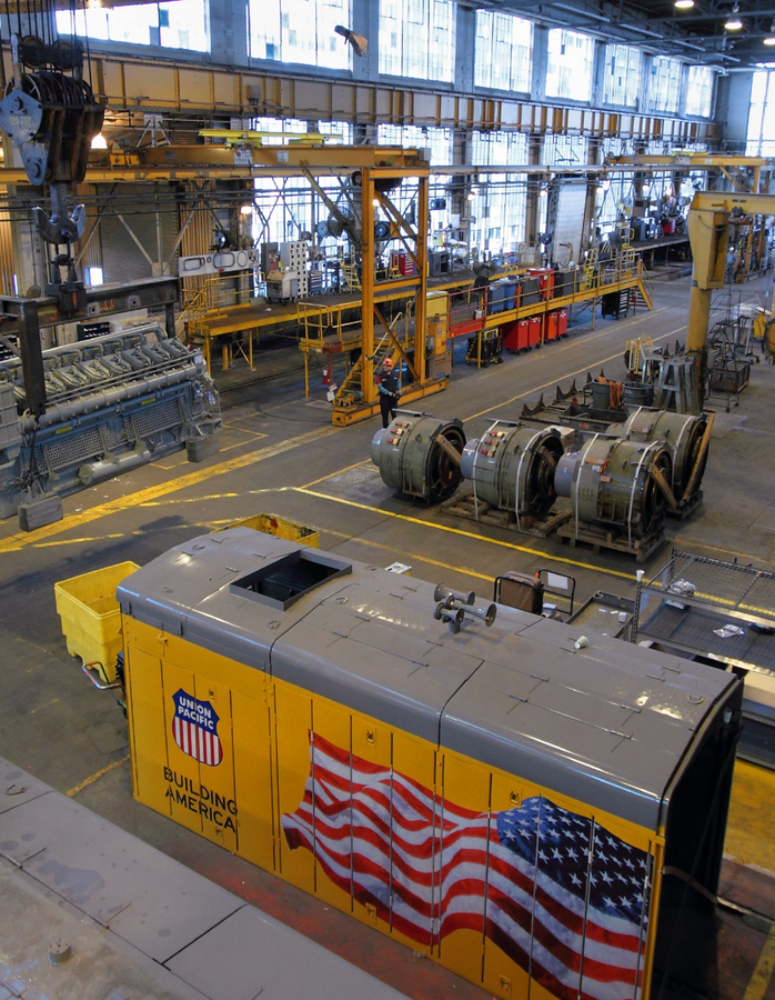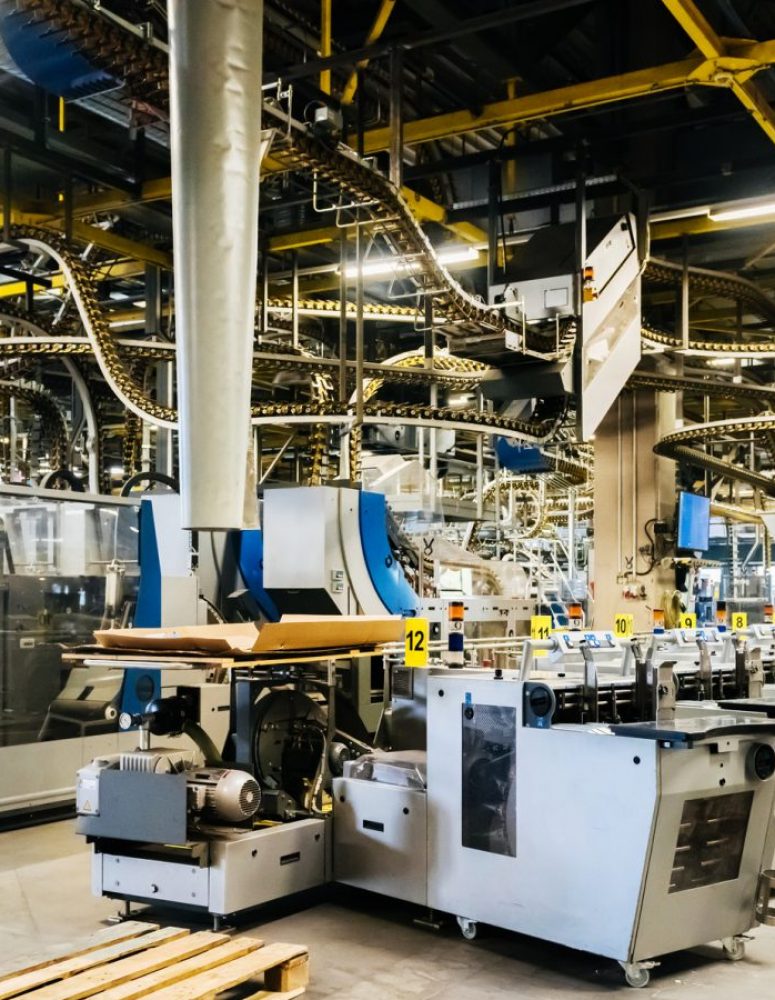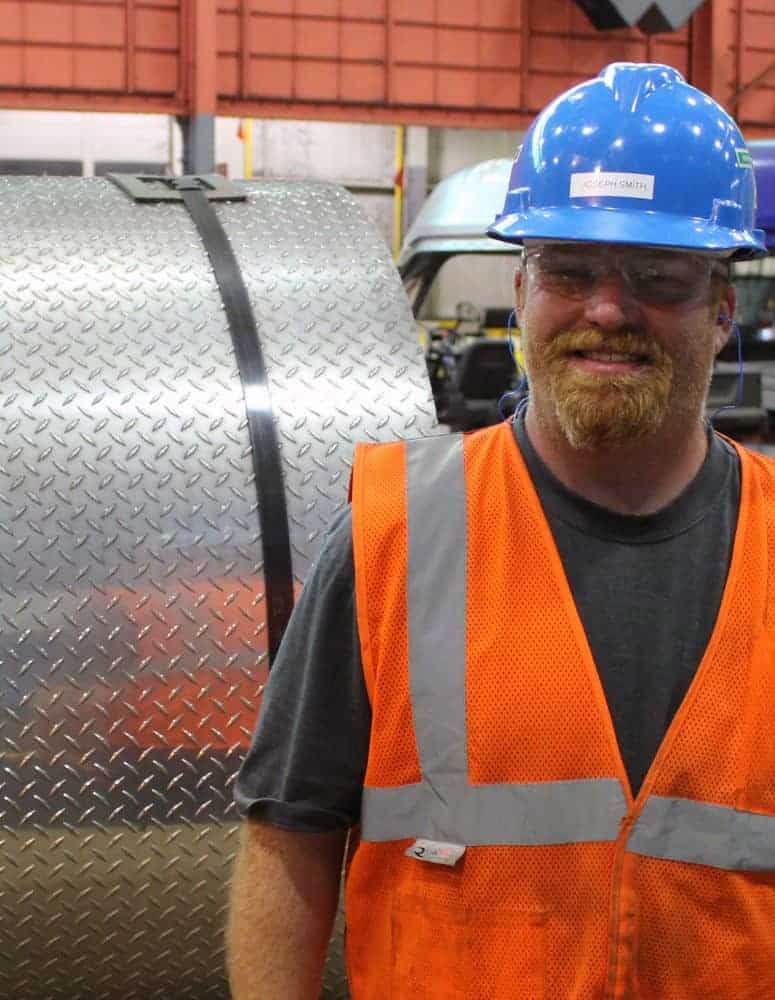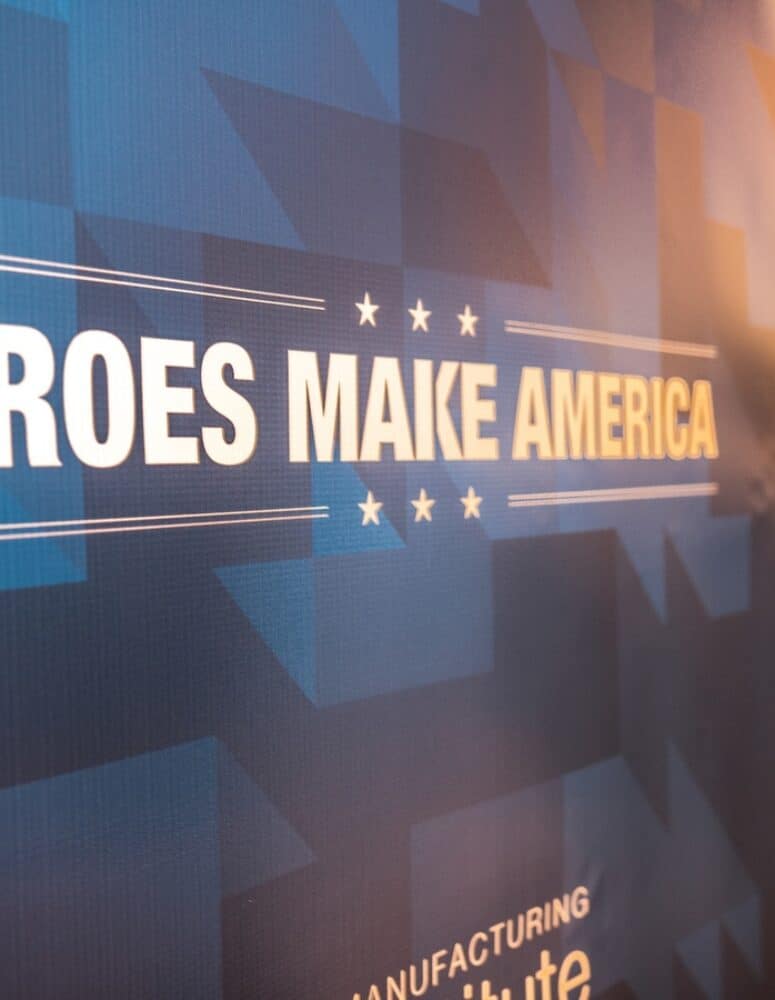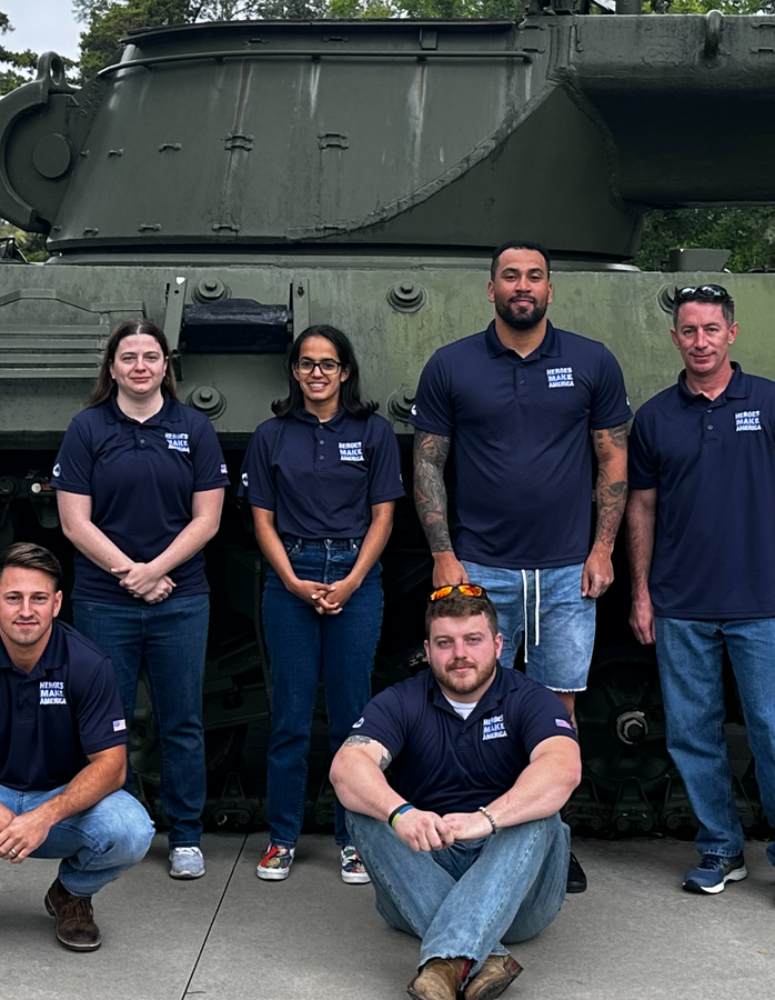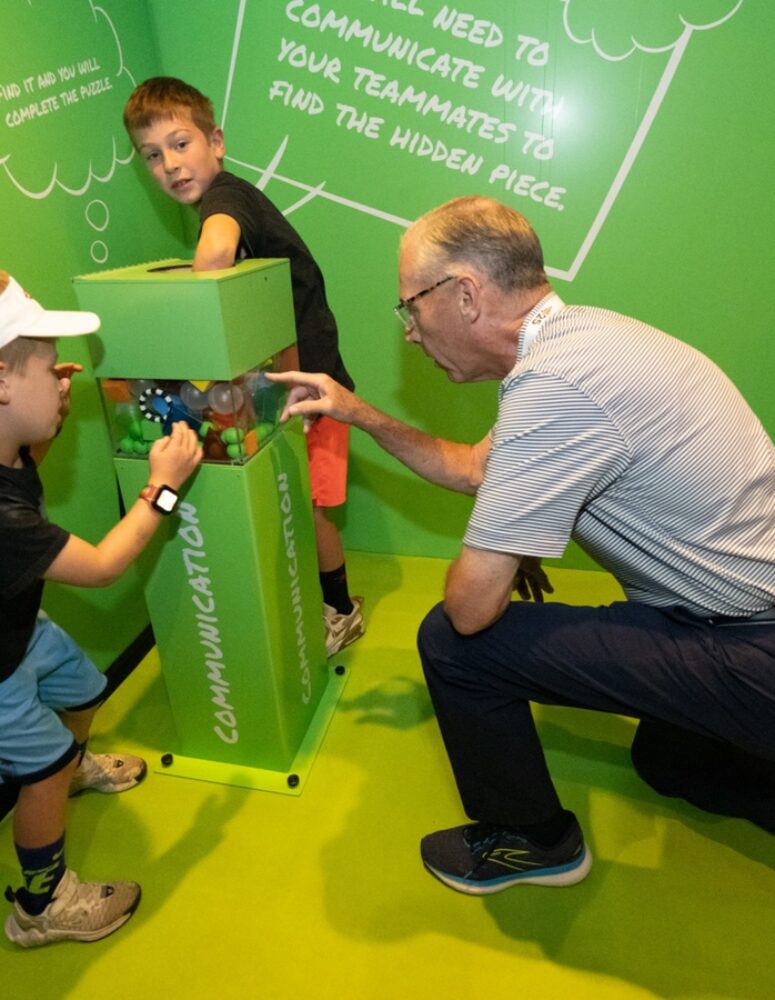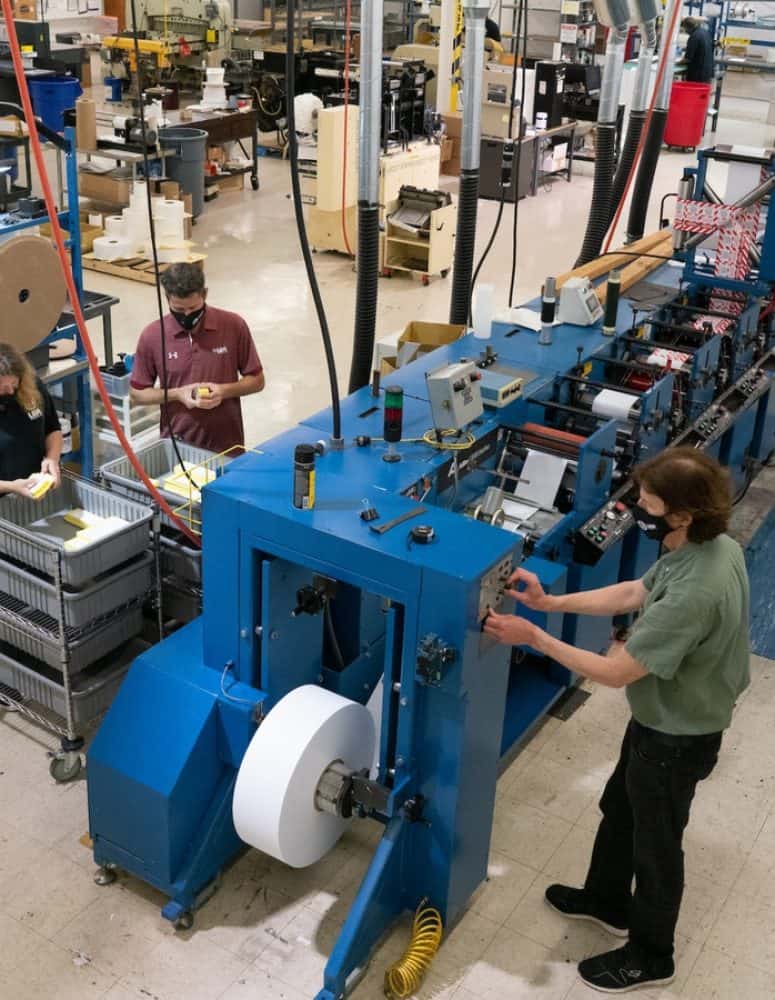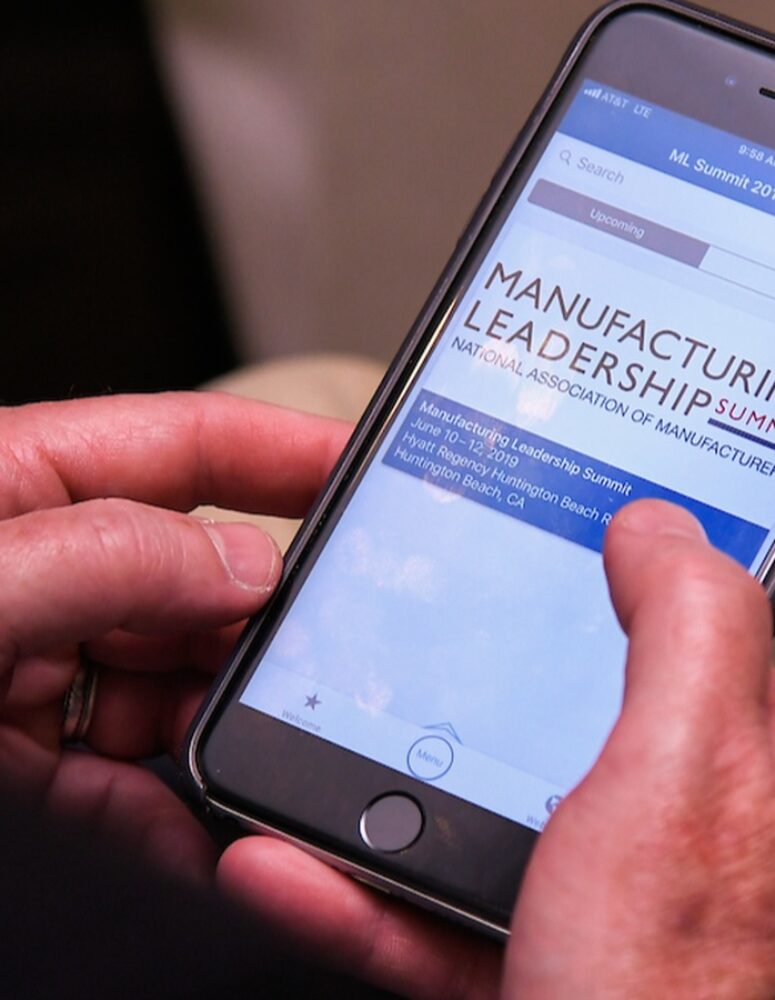WATCH: 2023 State of Manufacturing Address
Presented by Jay Timmons, President and CEO of the National Association of Manufacturers, the 2023 State of Manufacturing Address was given from Husco International in Waukesha, Wisconsin. Special remarks were given by Kurt Bauer, President and CEO, Wisconsin Manufacturers & Commerce. Special thanks to Husco President and CEO Austin Ramirez and his team for hosting this year’s address.
Read the official remarks here.
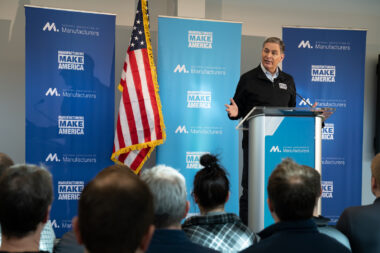
We’re hitting the road. This year’s NAM State of Manufacturing Address officially kicked off the 2023 leg of the NAM’s Competing to Win Tour. The tour will continue to spotlight the industry’s rapid transformation, while also focusing on manufacturing’s well-paying careers, diverse workforce and real-world solutions for the industry’s continued growth.
Upcoming stops: Waukesha and Pewaukee, Wisconsin (Tue, Feb 21); Fishers, Indiana (Wed, Feb 22); Harahan and Avery Island, Louisiana (Thurs, Feb 23)
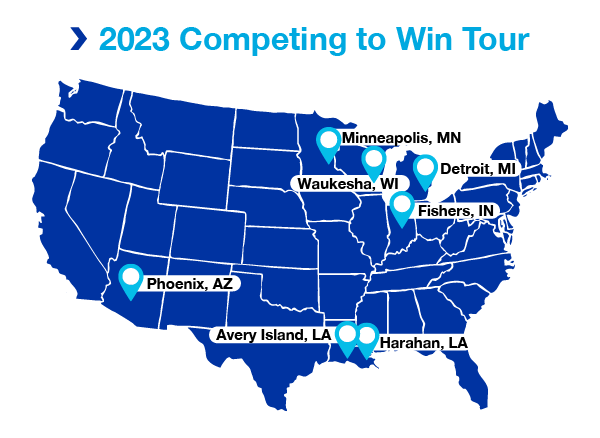
Why Female Mentorship Matters in Manufacturing

A great mentor can make all the difference to your career—especially if you’re in an industry where you may find yourself in the minority. To help women in manufacturing reach their full potential in a male-dominated industry, the Manufacturing Institute’s Women MAKE America program has created a mentorship program, generously supported by its 35×30 Campaign supporters, Dow, General Motors, Arconic Foundation, Alcoa Foundation and Ketchie.
- The program has an ambitious goal: to train more than 1,000 female mentors by 2030 and connect them with younger women in the industry as well as students in colleges, high schools and middle schools.
One year into the program, the participants are already seeing an impact. In a recent Women MAKE webinar, attendees got to hear from one successful and happy mentee, while also receiving guidance on building their own slate of mentors.
Making a difference: “I was especially thankful for the Women MAKE Mentorship Program because it filled a gap in my support system and allowed me to have a mentor who was really dedicated to my professional development,” said Zen Saunders, a 2022 Women MAKE mentee and diversity, equity, inclusion and employee experience leader at Dow.
- Saunders explained that her mentor shared examples of how she built her career, which inspired Saunders to map out her own next steps more creatively. Through regular meetings with her mentor, Saunders learned to find common interests with colleagues and earn their buy-in on new projects.
- “[My mentor has] been an active listener and committed to my success, creating a safe space for me to learn from the challenges that I’ve faced while offering a refreshing perspective that’s uplifting and encouraging,” said Saunders.
Support from Women MAKE: After hearing from Saunders, participants in the webinar were asked to design a personal “board of directors” to mentor them in their own careers. Women MAKE hosts many such activities, which are designed to forge connections between participants and encourage them to think ambitiously about their career paths.
- The board members could be people from participants’ personal or professional lives, instructed MI Director of Women’s Engagement Sarah Shields. An ideal board of directors should include a sponsor, an innovator, an expert, a truth teller and a safe space.
- After they brainstormed a list of people who could fit these roles, Shields encouraged participants to ask these people to act as mentors and to schedule regular times to discuss their career plans.
The last word: “I’m thankful to the Manufacturing Institute for this opportunity and the amazing Women MAKE Mentorship Program. It’s really been a life-changing and transformative experience for me. I highly recommend this program for women and girls currently in or interested in the industry,” Saunders said.
Get involved: In addition to young and senior manufacturing professionals, this year Women MAKE is inviting young women and girls ages 13+ who are interested in STEM, as well as refugees seeking opportunities in the U.S., to join the Women MAKE Mentorship Program.
- If you are interested in joining the Women MAKE Mentorship Program as a mentor, or know of someone who would benefit from becoming a mentee, check out the application. The deadline for applying is Tuesday, Feb. 28.
- You can also tune in to the next Women Connect webinar on “Building Your Personal Brand” on Thursday, Feb. 16.
- And last, if you have questions, please contact the Women MAKE team at [email protected].
Creators Connect Launched
As part of the Creators Wanted campaign, the NAM and the Manufacturing Institute have partnered with FactoryFix, a leading one-stop solution for manufacturing recruitment, to launch Creators Connect.
The digital career-resources platform aims to address the skills gap and misconceptions about the manufacturing industry, providing manufacturers with a powerful new tool to help build their workforce.
What it is: The platform, which is housed on Creatorswanted.org and powered by FactoryFix, is free to use. It is the first and only unified platform where users can search and explore job openings, career pathways and job training programs across the entire manufacturing sector.
- With more than 400,000 listed job openings, Creators Connect builds on the success of its parent initiative, Creators Wanted.
- It is also working to boost the number of students enrolling in technical and vocational schools or reskilling programs by 25% and to increase the positive perception of the manufacturing industry among parents and career influencers.
Learn more about how to get the most out of Creators Connect by visiting the FAQ page here or reading an article on the launch here. Questions? Contact the Creators Wanted team here.
What to Know about Hiring Military Talent
With 200,000 people transitioning out of the military annually in addition to veterans, reservists and military spouses, the military population represents a highly skilled workforce. At a recent roundtable, panelists from Smithfield Foods, Dow and National Gypsum discussed how the manufacturing industry can leverage this population’s strengths.
Key Insights
- Manufacturers should identify a leader with military background in their organization to support the hiring process, particularly in parsing military and manufacturing lingo in job descriptions and resumes.
- Manufacturers should communicate if they will accept military experience as an equivalency to an associate’s or bachelor’s degree in their job descriptions.
- Networking can be the determining factor in getting an interview and landing a job offer. The MI will be hosting a virtual hiring fair in late February. Keep an eye on our website for more updates!
- Employee resource groups can be an excellent resource for newly hired military talent and can advocate for population-specific needs.
Read the full article here.
How Manufacturers Should Pursue Second Chance Hiring
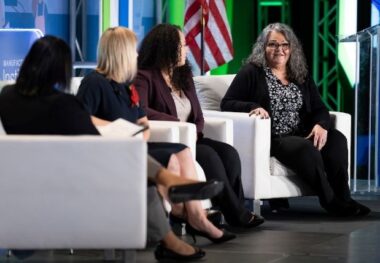 With one-in-four Americans possessing a prior conviction, manufacturers can access a diverse and motivated talent pool by pursuing second chance hiring.
With one-in-four Americans possessing a prior conviction, manufacturers can access a diverse and motivated talent pool by pursuing second chance hiring.
At the Manufacturing Institute’s inaugural Workforce Summit held back in October, panelists from the MI, Saint-Gobain, JBM Packaging and Envoy shared tips on how to create such hiring programs and the benefits they’ve seen so far.
Key Insights
- Data shows that second chance individuals are retained longer, have higher productivity and engage in more training than the average individual.
- Start with a pilot program, then scale it up. It’s important to select a site that has the right culture, plant manager and HR support.
- Build a framework that allows the company to fairly evaluate an individual’s background.
- Offer support systems and partner with community organizations to meet the unique needs of this population.
Read the full article here.
How Manufacturers Should Pursue Second Chance Hiring
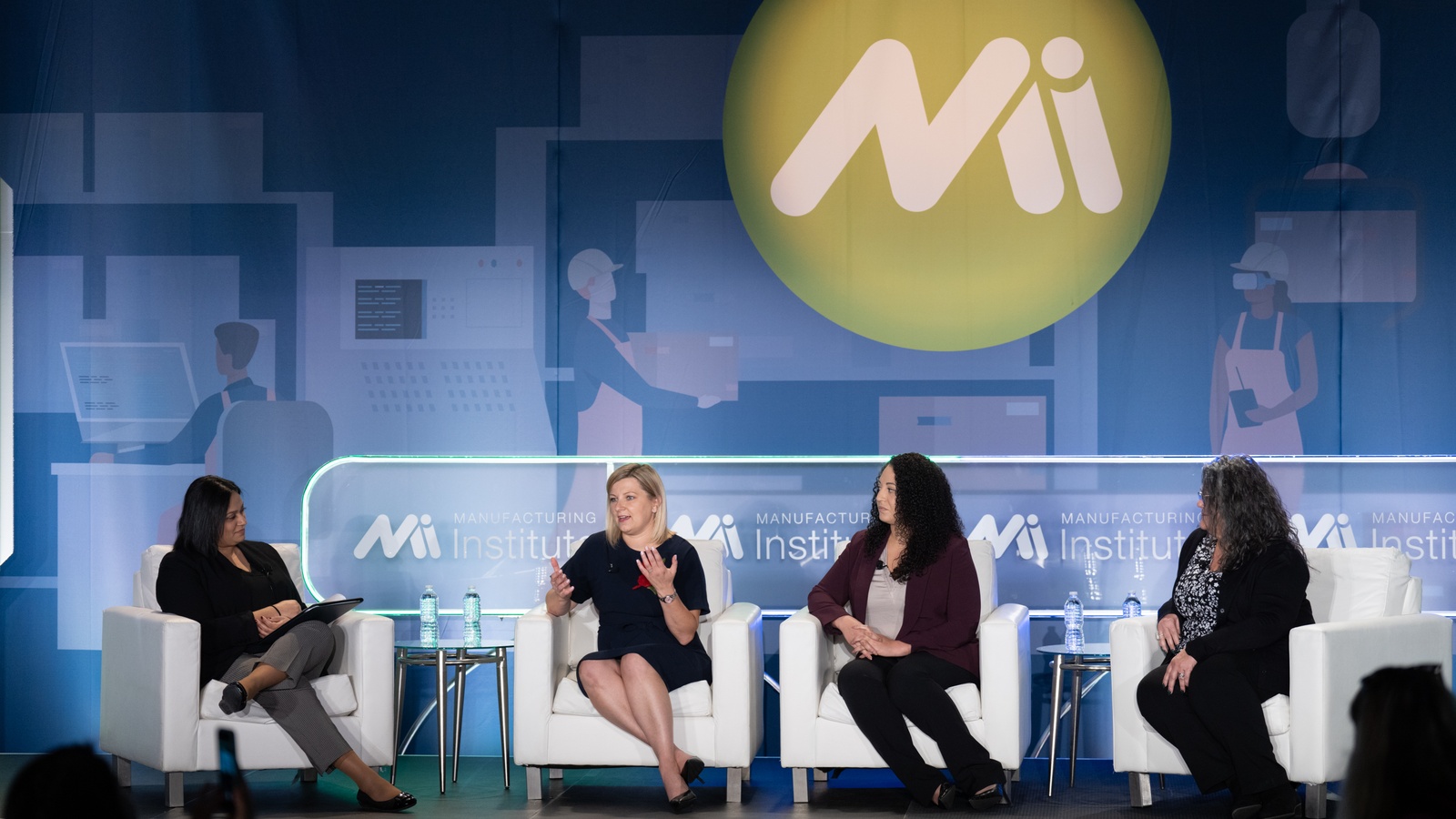
With one-in-four Americans possessing a criminal record, manufacturers who pursue “second chance hiring” are accessing a diverse and motivated talent pool. What do they need to know to begin?
At the Manufacturing Institute’s inaugural Workforce Summit, held in Cincinnati, Ohio, last October, panelists from manufacturers Saint-Gobain and JBM Packaging and from Envoy, a social impact advisory firm specializing in fair chance employment, shared tips on how to create such hiring programs.
Risk assessment: While safety is a concern, panelists emphasized that there is a difference between perceived risk and actual risk.
- “The data shows that second chance individuals are retained longer, have higher productivity and engage in more training than the average individual that you bring in,” said Cassi Zumbiel, managing director at Envoy.
- Saint-Gobain uses “a framework for background checks which we have developed in collaboration with our legal team. Candidates in the second chance hiring programs demonstrate higher level of commitment and a proactive approach to job searching, setting themselves up for success in future roles. We like to collaborate with our community partners in order to provide a good candidate experience and a seamless recruiting process,” explained Magda Dexter, senior vice president of communications and human resources at Saint-Gobain.
- For JBM Packaging, it’s about having honest and transparent conversations with candidates about their backgrounds. JBM also works with case managers to get referrals and assess candidates’ fit with the company.
How to get started: Dexter recommended that companies start with a pilot program, then scale it up, noting that it’s important to select a site that has the right culture, an engaged plant manager and HR support.
- Saint-Gobain has also tried out a variety of different support systems across their company, including hiring a part-time social worker as well as instituting a buddy system and a mentoring program.
- Zumbiel encouraged companies to do background checks only after a conditional offer has been made, recommending that companies should limit the look-back period to three to seven years. “That helps eliminate some of that bias and makes you really look at the candidate holistically.”
- Panelists also noted that it was important to review job descriptions to make sure they specify that second chance candidates are welcome.
From jobs to careers: Ninety percent of JBM’s second chance hires are entry-level production workers; the other 10% have mechanical or machinist skills and fill entry-level technical roles. However, Valerie Plis, director of human capital and culture at JBM, realized there was a lot of experience that the company wasn’t tapping into.
- Plis shared a story of a second chance hire who started as a machine operator. As Plis got to know her, she realized that the new hire had a background in training. The new hire progressed from an operator trainer to a lead trainer, then joined the HR team. In addition to leading training across the company, she now helms the second chance recruiting initiative, coming back full circle.
- Plis added, “At JBM, we started working on putting together some very defined career paths. It’s changed the way we conduct our performance reviews, so now we’re focused on growth and development.”
Succeed by partnering: While second chance hires come with a lot of benefits, there are also some challenges that are unique to this population. Partnering with community organizations can help, the panelists said.
- For Dexter, it’s about figuring out what the company will offer and what the community partners will offer. “We will support with on-the-job training. We will support with [providing] structure at work. We will rely on [our community partners] for job readiness and life skills training.”
- Zumbiel noted that “the community partner can advocate for the employer about the great opportunities and the benefits of working in manufacturing” and also prepare candidates to ace their interviews.
The last word: “A lot of the things we implemented, we thought we were doing just for our second chance population, but they actually ended up becoming a huge benefit for our entire workforce,” Plis said.
What Manufacturers Should Know about Hiring Military Talent
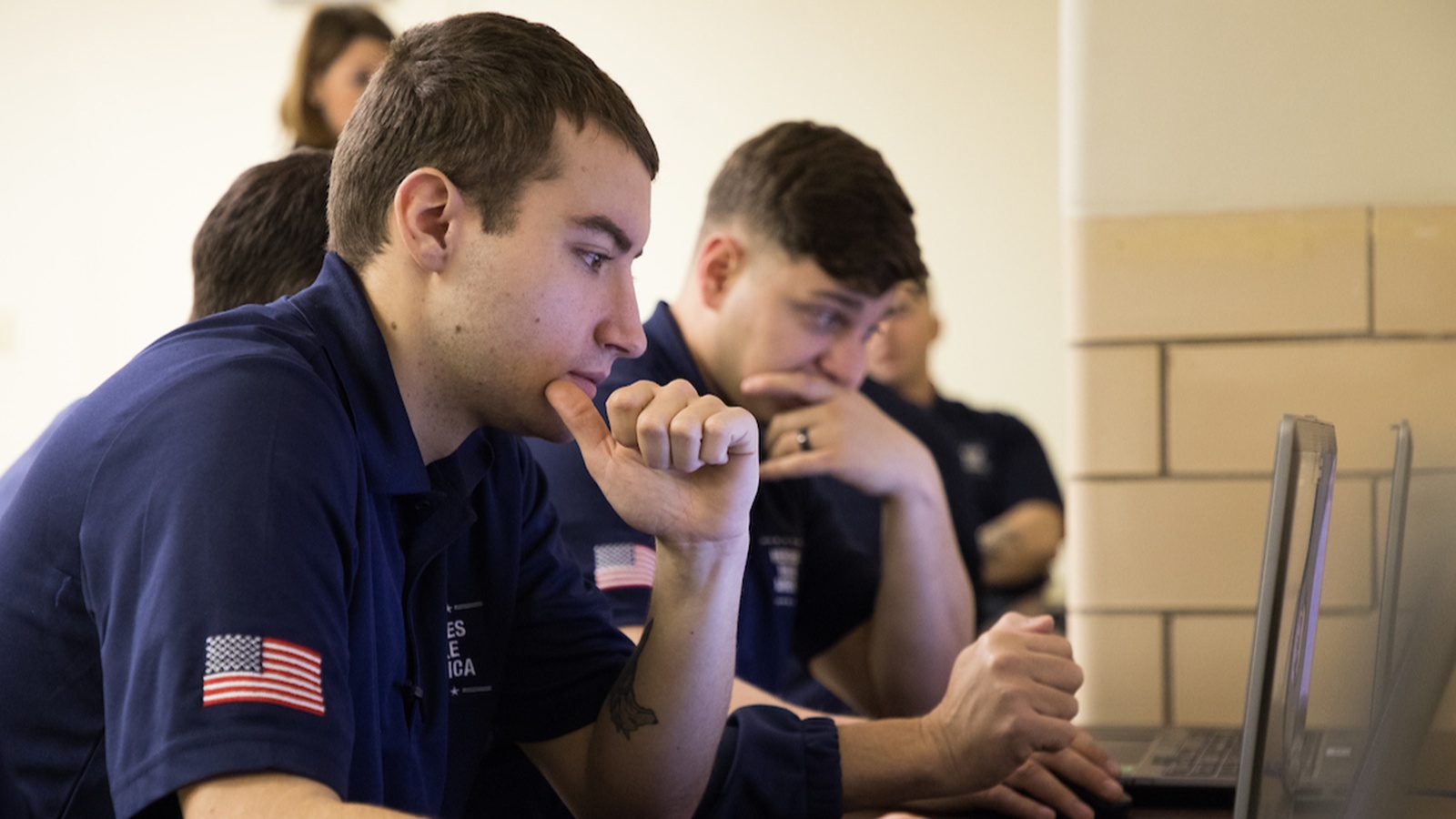
With 200,000 people transitioning out of the military annually, in addition to veterans, reservists and military spouses, the military population represents a highly skilled talent pool that manufacturers are eager to tap. But how should they go about doing so?
At a recent roundtable, the Manufacturing Institute—the NAM’s 501(c)3 workforce development and education partner—brought together veterans who have transitioned successfully out of the military into manufacturing careers, as well as manufacturers who have prioritized attracting and retaining military talent. The panelists discussed how companies can leverage this talent, and here’s some of what they had to say.
A great fit: “If you look at manufacturing, a large part of the job is doing things well, day after day after day—and that’s essentially what happens in the military. It’s that military discipline. It’s one of the most compelling reasons why we should be aggressively hiring military veterans,” said Dow Global Business Director Greg Bunker.
- “We’ve got three principles in our organization that we call ROI: responsibility, operational excellence and innovation. We know that veterans bring each of these to the table,” said UnitedHealth Group Director of People Analytics Troy Vandenberg (formerly director of people analytics at Smithfield Foods).
Networking matters: Transitioning from the military to the civilian workforce can be difficult, but veterans who make direct connections with manufacturers often land excellent job offers. The MI’s Heroes MAKE America program facilitates those connections, offering veterans opportunities to meet manufacturers as well as support in the job search process.
- Nicole Rena, an Army veteran and now a shift operations manager at Smithfield Foods, applied to five jobs at Smithfield and didn’t hear back on any of them. But then the program manager at HMA contacted Smithfield’s talent acquisition department to ask if they could speak with Rena about why she wasn’t chosen, so she could be more successful moving forward.
- As Rena put it, “The first 15 minutes of the call was about what I could do better on my resume, but after talking about my background and what I was looking for, the talent acquisition lead said he was going to count this as my first interview.”
- She landed the job! In her 18 months at Smithfield, Rena has been promoted twice.
Language can be a barrier: Rena’s experience speaks to one of the disconnects identified by veterans and manufacturers alike—the language used in job descriptions and resumes. Veterans often do not know how to best describe their skills and experiences in a way that civilian employers can understand.
- To avoid missing out on great talent, the panelists advised, manufacturers should ensure that a leader with a military background is involved in the hiring process, to translate military lingo and skills into more familiar manufacturing terms.
- Manufacturers should also specify in their job descriptions whether they will accept military experience as equivalent to an associate’s or bachelor’s degree, Bunker advised.
Support is crucial: Once veterans have been hired, the company must ensure they are set up for success. “Transitioning is a really scary process for veterans. It’s very stressful. The support that a company can provide is huge,” said Meg Zehringer, a Coast Guard veteran and a corporate environmental engineer at National Gypsum.
- Employee resource groups are a great way to provide support to veterans while also serving as a platform to advocate for population-specific needs, the panelists agreed.
- To be most effective, ERGs should be run by employees, not human resources departments, noted Vandenberg. Bunker added that establishing connections between the ERG and company leaders is also key.
The last word: “Equally as important as the wording of your job descriptions and preferred skills is creating a culture that invites a diverse group of people. That’s going to play a huge factor in attracting veterans,” said Zehringer.
Get involved: If you are interested in learning more about HMA, its next Heroes Connect event will be a networking opportunity with Johnson & Johnson on Wednesday, Jan. 25.
- You can also tune in to (or share with interested veterans) this Veterans Learning Series workshop on how to use LinkedIn effectively, coming up on Thursday, Jan. 26.
- And last, HMA will be hosting a virtual hiring fair in late February. Keep an eye on the MI website for updates!
How Will AI Impact the Manufacturing Workforce?

AI is changing the way manufacturers do business—from the production line to the back office and across the supply chain. At the Manufacturing Leadership Council’s Manufacturing in 2030 Project: Let’s Talk about AI event last month in Nashville, Tennessee, panelists discussed how those sweeping changes would alter, and enhance, the manufacturing workforce.
A collaboration between the MLC (the NAM’s digital transformation arm) and the MI (the NAM’s 501(c)3 workforce development and education partner), the event provided key insights for manufacturers into how technology and workforce trends interact with each other. Here are a few key takeaways.
Net positive: “The history of technology adoption is about improving the job quality of individuals on the shop floor. AI helps them to do the job better, provide them with better tools, gives them greater authority and ultimately increases the value-add of their jobs. All of that is a net positive for those individuals,” said MI Vice President of Workforce Solutions Gardner Carrick.
- By leveraging data and enabling greater efficiency, AI will improve communication, increase collaboration across disciplines and stimulate innovation, according to the panel.
- In addition, “AI can even inform the workforce’s creativity by working with it to design a new product or system,” said Jacey Heuer, lead, data science and advanced analytics, Pella Corporation.
Skills needed: While you might expect that implementing AI requires workers skilled in programming, data science and machine learning, manufacturers will also need to expand their bench of critical thinkers and problem-solvers. The panelists had a few tips to help companies along.
- Invest in upskilling programs to make the AI integration process at your company smoother and develop the talent you already have.
- Update job descriptions to reflect the skill sets the company will need in the next five to seven years.
- Consider recruiting for and teaching adaptive skills—skills that enable individuals to adapt easily to changing demands and environments—which can increase the flexibility of your workforce.
- Build partnerships with local schools, community colleges and technical and vocational schools to develop talent pipelines that will meet your needs.
The human-AI collaboration: While AI will take over monotonous, repetitive tasks, the panelists predicted that the industry will continue to center around human labor.
- “You can teach AI to do X. You can teach AI to do Y. [However,] combining the two may be really difficult for AI, while a human can do it better. You’re going to continue to see humans in roles that center on making decisions and telling stories,” said Asi Klein, managing director, industrial products and organization transformation, Deloitte Consulting.
- Meanwhile, AI adoption will likely lead to an increase in available jobs, as more skilled workers will be needed to guide and inform these new processes.
The last word: “Over the last 12 years, we’ve seen a lot of technology adoption, but we have not seen a lot of job loss. In fact, we’ve seen job gains,” said Carrick. “There is a lot of opportunity to reimagine jobs to add value that AI will help to illuminate.”
How Will AI Impact the Manufacturing Workforce?
AI is changing the way manufacturers are doing business from the production line to the back office and across the supply chain. At the Manufacturing Leadership Council’s Manufacturing in 2030 Project: Let’s Talk about AI event, panelists from the MI, Pella Corporation, and Deloitte Consulting discussed the potential impacts of AI on the manufacturing workforce of tomorrow.
Key Insights
- By leveraging data and utilizing efficient systems, AI will improve communication, increase collaboration across disciplines and stimulate innovation.
- Manufacturers need to invest in upskilling programs to make the AI integration process smoother.
- Start building partnerships with local schools, community colleges and technical/vocational schools to develop talent pipelines that will meet the skills needs of the future.
- While AI will increase efficiencies and reduce repetitive tasks, humans will continue to play an important role in the manufacturing process.
D+I In-Person and Virtual Summit
On December 1, the MI held its third annual D+I Summit in Washington, D.C. Attendees were provided with tools and shared experiences needed to create inclusive and equitable workplaces. Strong leaders in this space helped guide the discussions on implementing change and making an impact.
Key Takeaways
- Employee Resource Groups Session (ERGs) – Attendees heard from leaders at McCormick & Company and Pella Corporation on how to create and support employee resource groups. The conversation covered utilizing ERGs as a business imperative, what leadership’s role within ERGs can look like, the process to establish and maintain ERGs, different logistics of ERG maintenance (budgets, roles, and so forth), and more.
- Executive Panel Discussion – Attendees heard from three leaders from Merck, Honeywell, and Armstrong World Industries on how manufacturers are promoting diversity and leveraging inclusion in the communities they operate in. The conversation included reviewing each company’s D&I initiatives and best practices in creating an inclusive workplace that have been implemented, as well as different D&I trainings and advice to fellow manufacturers looking to get started with D&I.
Want to hear these sessions and learn more? You can view a recording of the Virtual D+I Summit here.
